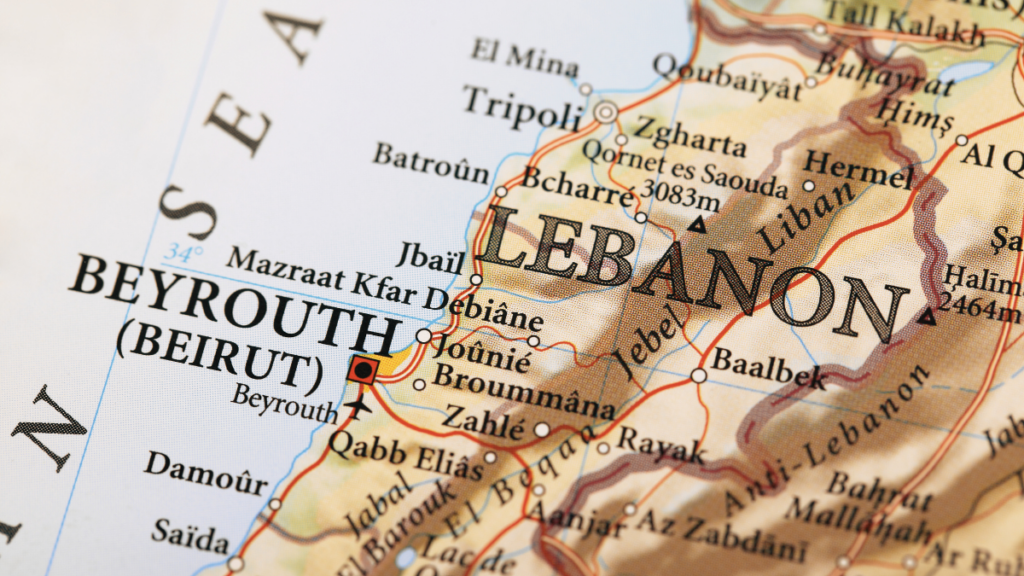Lebanon’s fragile stability is further threatened by the ongoing conflict between Hezbollah and Israel, exacerbating the country’s financial and political crises. Since October’s Gaza war, Hezbollah and Israel have exchanged fire, intensifying risks of full-scale war. With Lebanon reeling from a severe economic collapse, political deadlock, and a massive Syrian refugee crisis, the situation is dire. The conflict has displaced 95,000 people, deepening the nation’s already profound hardships.
Sign up for your early morning brew of the BizNews Insider to keep you up to speed with the content that matters. The newsletter will land in your inbox at 5:30am weekdays. Register here.
Join us for BizNews’ first investment-focused conference on Thursday, 12 September, in Hermanus, featuring top experts like Frans Cronje, Piet Viljoen, and more. Get insights on electricity and exploiting SA’s gas bounty from new and familiar faces. Register here.
By Tom PerryEditing by Timothy Heritage, Gareth Jones and Frances Kerry
The conflict between Hezbollah and Israel is unfolding against a backdrop of financial and political crises in Lebanon, adding to the risks for the fragile country should hostilities spiral into full-blown war.
The Iran-backed Hezbollah and Israel have been trading fire since the outbreak of the Gaza war in October. The chances of an escalation increased after Israel said it would strike hard against Hezbollah, accusing the group of killing 12 children and teenagers in a rocket attack on a football field in the Israeli-occupied Golan Heights. Hezbollah denied any responsibility for the attack.
Though the conflict has been relatively contained so far, it is weighing heavily on a country where five years of domestic crises have hollowed out the state. The conflict has forced some 95,000 people to flee southern Lebanon, according to the U.N. Office for the Coordination of Humanitarian Affairs.
Here’s an overview of Lebanon’s troubles:
ECONOMIC MELTDOWN
Lebanon is still suffering after a catastrophic financial collapse that rocked the country in 2019.
Caused by decades of profligate spending and corruption in the ruling elite, the meltdown sank the currency, toppled the banking system, paralysed the state, and fuelled poverty and the biggest wave of emigration since the 1975-90 civil war.
The World Bank has described it as one of the sharpest depressions of modern times. Lebanon’s economy shrank from $55 billion in 2018 to $31.7 billion in 2020. The government has yet to enact reforms needed for recovery.
Public sector workers, their salaries decimated, are among those still feeling the impact. Aid from Qatar and the United States has given a slight boost to the wages of the Lebanese army, long seen as vital to preserving the civil peace.
The lingering damage was captured in a World Bank report in May that found poverty had more than tripled in Lebanon over the past decade, reaching 44% of the population.
It found that one in three Lebanese was poverty-stricken in 2022 in five surveyed governorates, including Beirut. While new Beirut restaurants serve the rich, the World Bank report said three out of five households had cut back on food spending.
The International Monetary Fund said in May a lack of action on necessary economic reforms continued to exert a heavy toll on the economy and people. It said there was no credible and financially viable strategy for the banking system.
POLITICAL TENSIONS
Lebanon has not had a head of state or a fully empowered cabinet since Michel Aoun’s term as president ended in October 2022, leaving an unprecedented vacuum.
The government of Prime Minister Najib Mikati has been serving in a caretaker capacity since then. Filling the presidency and installing a fully empowered government requires a deal among Lebanon’s deeply divided factions. Previous such crises have only been resolved through foreign mediation, but there has been no sign of effective intervention this time.
On one level, the standoff reflects rivalries among Maronite Christians, for whom the presidency is reserved under Lebanon’s sectarian power-sharing system.
On another, it reflects a power struggle between the Shi’ite movement Hezbollah – which propelled its ally Aoun to the presidency in 2016 – and opponents who have long opposed the group’s possession of arms.
Hezbollah’s critics say the group has once again unilaterally embroiled Lebanon in conflict.
SYRIAN REFUGEE CRISIS
Thirteen years since Syria’s conflict broke out, Lebanon remains home to the largest refugee population per capita in the world: about 1.5 million Syrians – half of whom are refugees formally registered with the United Nations refugee agency UNHCR – in a country of approximately 4 million Lebanese.
Funding for the Syria crisis is dropping, reflecting fatigue among donors grappling with other conflicts around the world. Despite their differences, parties from across Lebanon’s political spectrum agree the Syrians should be sent home.
Read also:
🔒 In-depth: The history of the Israel-Palestine conflict explained
Debunking Al Jazeera’s biased coverage of the Israel-Hamas conflict: Woode-Smith
🔒 FT: ICJ’s Israel judgment seeks to restore rule of law to a brutal conflict
SOURCE: REUTERS
>>> Read full article>>>
Copyright for syndicated content belongs to the linked Source : BizNews – https://www.biznews.com/global-citizen/2024/07/29/hezbollah-israel-conflict-crises-lebanon
